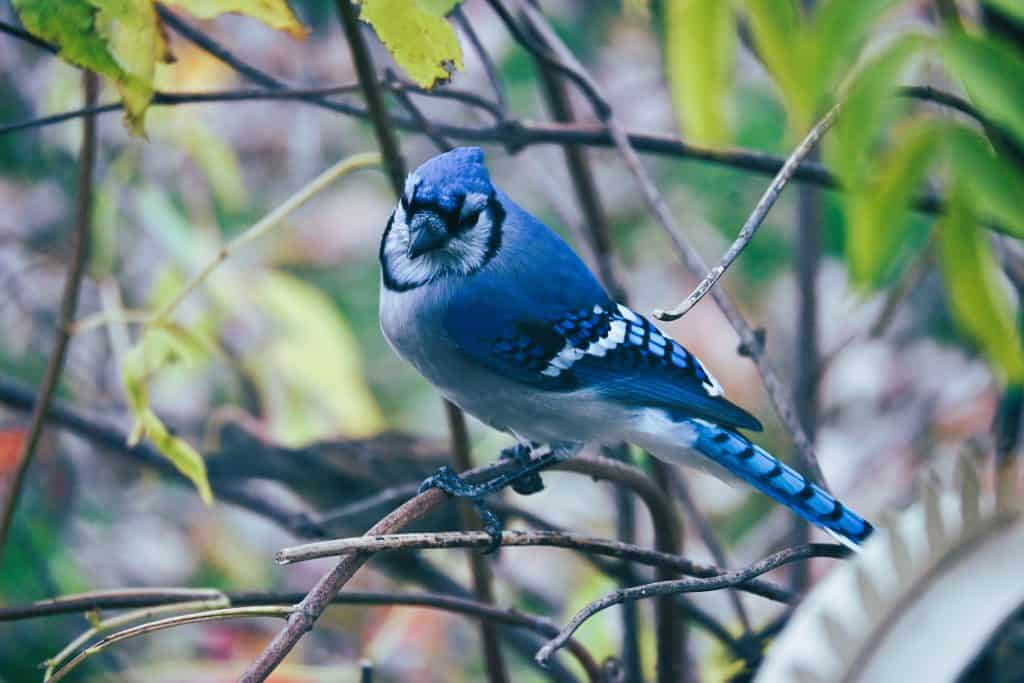Here’s what’s blooming in town this week to make your walks more enjoyable
By Laura Eisener
Many Saugonians woke up to a cold Veterans Day morning, with the temperatures dropping to freezing for the first time. Only a handful of flowers are likely to continue blooming past the first frost, but we may still see a few plants producing a blossom or two, and there is still some planting time left before the ground completely freezes. Heavy winds and rain several times in the last few weeks have brought down leaves of many colors. Birds like the colorful blue jay (Cyanocitta cristatus) flock to feeders for some comfort food.
Leaves of Japanese maples (Acer palmatum) are among the last to fall each year. In Japan, the fall foliage season is almost as special as cherry blossom time, and many people collect Japanese maples for the variations in leaf shape, fall color and even summer color. Varieties of Japanese maple that have dark red leaves through the summer are among the most popular choices for accent trees. Many people are not aware that there are Japanese maples that have green leaves through the summer, although these often have the most vivid fall color: red, orange, yellow or a combination. As for leaf shape, there are several varieties with “laceleaf”-style leaves, very finely cut shapes rather than the more familiar pointed lobe styles. If you look across Riverside Cemetery from the sidewalk along Winter Street, one particular tree stands out for its mostly vivid red leaves. This is a Japanese maple growing next to one of the water spigots.
Another very striking Japanese maple, with more orange leaves than red, is in the traffic island of Saugus Center’s rotary adjacent to the Civil War monument. Its orange colors are striking beside the bright red burning bush (Euonymus alatus) on the south side of the circle. The rotary tree that will soon be stealing the most attention, though, is one that does not lose its leaves; earlier this week I saw DPW workers in their bucket truck adjusting the star on top of the spruce, and lights being strung between branches of other trees throughout the Saugus Center area.
Now that night temperatures are apt to be below freezing, plants are becoming dormant for winter. The stems and leaves of some grasses may remain standing and hold interest even after their stems and leaves turn brown. The ornamental millet (Pennisetum glaucum, sometimes known as Cenchrus americanus ‘Purple Majesty’) is an annual. I have brought it inside my garage at night in case we have some warmer weather later this month and can still enjoy its colorful leaves and dark seed heads. The ‘Cinnamon Stick’ variety of the native perennial grass little bluestem (Schizachyrium scoparium ‘Cinnamon Stick’) will be planted in the ground for the winter as soon as I get around to it, since it will grow again next spring. Most little bluestem has interesting colors in its stems, at times a bluish purple, but ‘Cinnamon Stick’ is a dark reddish brown, as the name suggests. Not only does it lend an interesting texture and color to a sunny garden or meadow throughout the year, but the stems can add interest to summer, fall and winter flower arrangements.
If you need more urging to get out and take a walk now that the weather feels more wintry, next Monday, November 17, is Take a Hike Day, so it is almost a requirement that you climb Breakheart Hill or at least take a brisk walk around town. It may be more difficult to talk yourself into going out that door into the cold, but the exertion of walking will warm you up fast.
Editor’s Note: Laura Eisener is a landscape design consultant who helps homeowners with landscape design, plant selection and, placement of trees and shrubs, as well as perennials. She is a member of the Saugus Garden Club and offered to write a series of articles about “what’s blooming in town” shortly after the outbreak of the COVID-19 pandemic. She was inspired after seeing so many people taking up walking.




